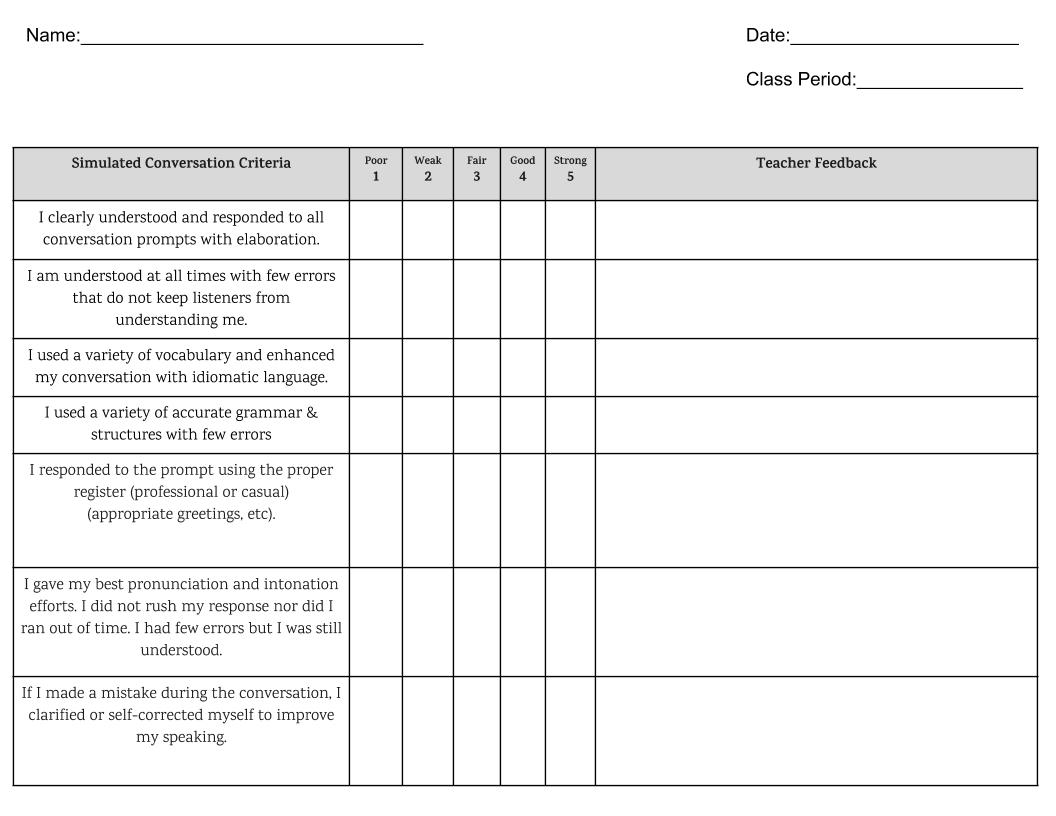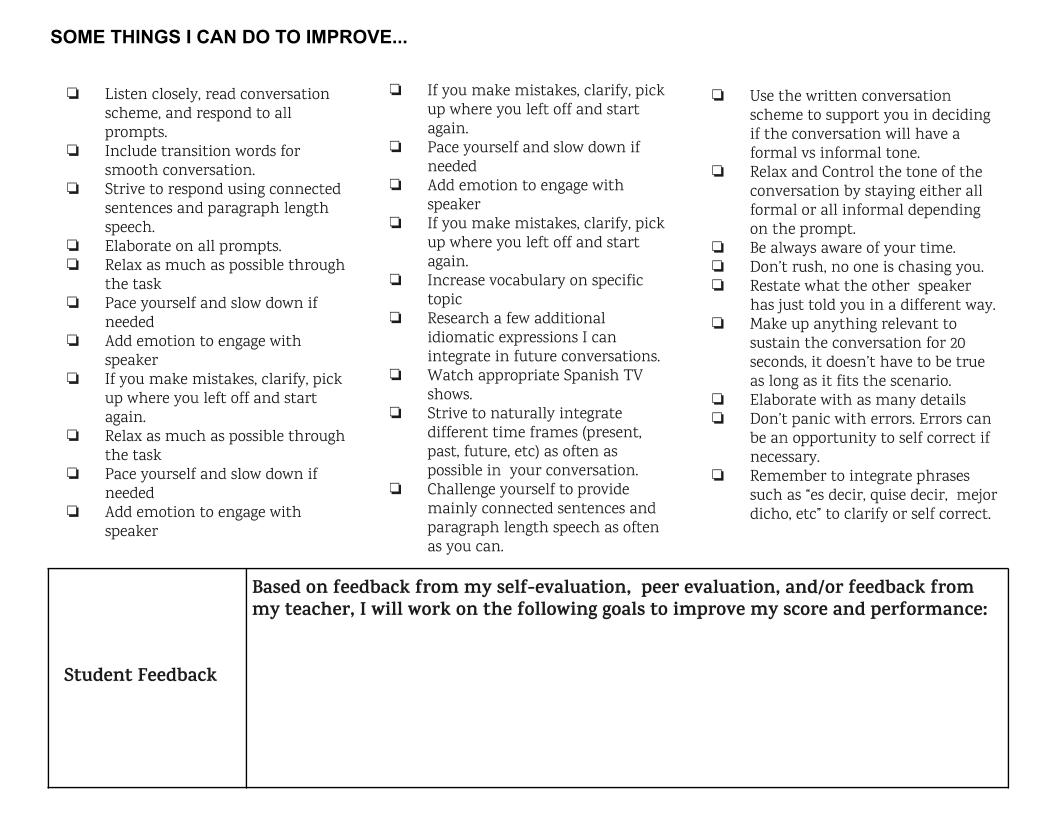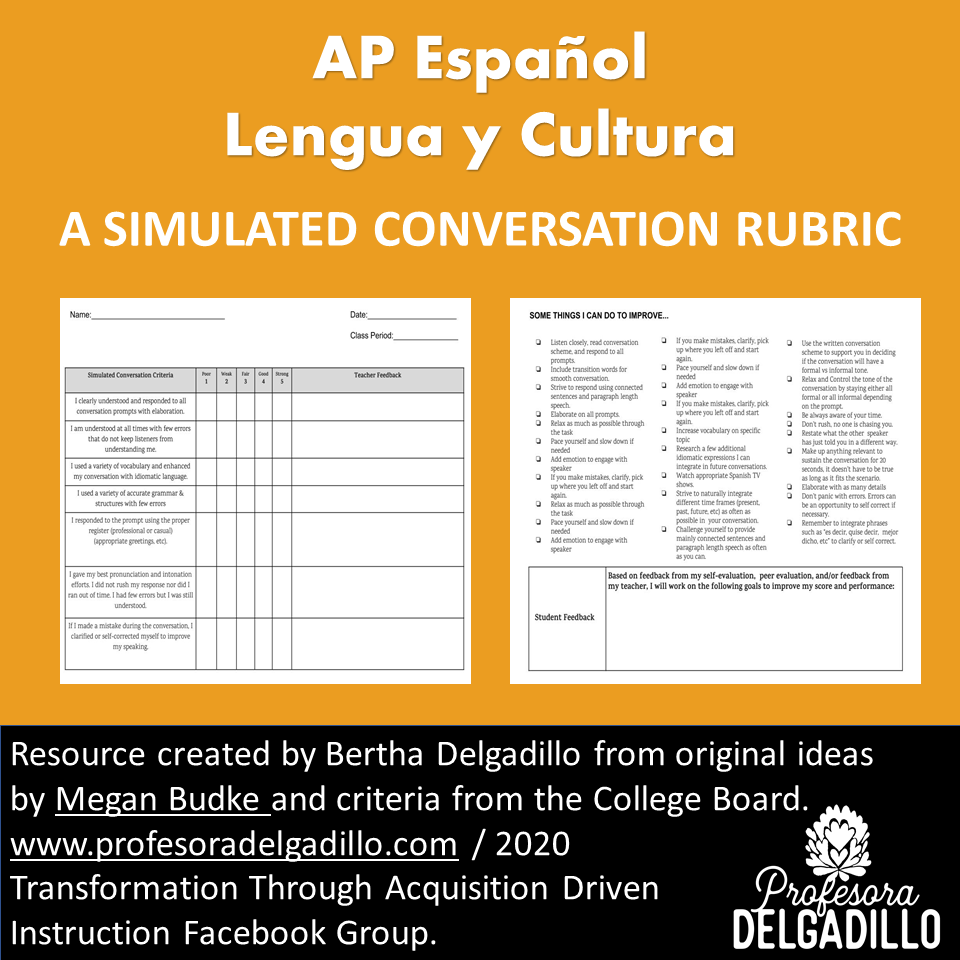I don’t know about you, but lengthy rubrics drive me and my students insane. Finding effective rubrics has been an ongoing endless journey for me (kind of like exploring your options on an online dating site although a Tinder for rubrics would not be a bad idea). Regardless of the level I am teaching, I like my rubrics to get to the point without being too wordy for me or the students. In my world, the perfect rubric must clearly describe performance expectations, provide a fair grading process, and allow me to target feedback for my students. Thus, resulting in my students’ best effort on a particular task. Rubrics provide a much needed structure for our students and should also open the door for meaningful conversations on elevating students’ performance levels.
What led me to use this type of rubric
This year, I had to reflect and analyze the way I assess and provide feedback in my classroom at all levels, but the one that was particularly challenging for me was the feedback I was providing for my AP Spanish Language & Culture Students.
This is because I have students ranging from Intermediate Low to Advance Low proficiency. I also have students with different levels of commitment to the class. Although not usually the norm, this year my three heritage speaker students are the least committed to the course. You see, this year I am truly blessed (not being sarcastic at all) with three boys who are passionate and talented soccer stars and they also happen to be best friends. Well, you can imagine how that can unfold in a class. I knew early on that the feedback I provided could potentially elevate their class engagement and commitment level so I decided to create assessment tools that would allow me to do just that. While I created this rubric keeping my heritage speakers in mind, these rubrics and the feedback I am able to provide have benefited all of my students in their growth throughout the semester.


You can get your free copy of this rubric and a guided student self evaluation tool for the interpersonal conversation FRQ of the AP test here.
Here are some of the benefits I have found when using this type of rubric:
- Because it isn’t wordy, it only focuses only on how students can reach for success at a particular task and level.
- I can always change the content and adapt it to fit another level or task in a matter of minutes because it is easily editable.
- My students are more likely to engage with this rubric as it is easier to read and it provides the task’s expectations with much clarity so students can reference these.
- It provides the opportunity for targeted high quality feedback and in my opinion, a much more fair grading process.
What type of rubrics are your favorite and why? Would you like to see more versions of this rubric for other levels?


Gracias Thanks for sharing!
My pleasure! In the near future, I would love to hear how you use these in your class.
Looks great!! I’d love to see more.
I will be creating more for different levels and for the AP cultural comparison! I will make sure to write a blog post for those, so stay tuned because they are coming!
Looks great! I would like to have a copy of this document
Hi Mercedes! All of the documents should have clickable links on their respective posts. If it isn’t working for you, you can email me at bertha@profesoradelgadillo.com.